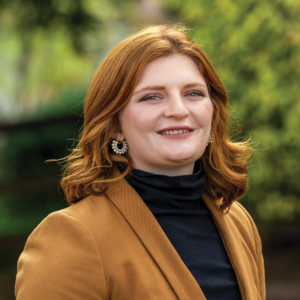By Shawna Morris, Senior Vice President, Trade, National Milk Producers Federation and U.S. Dairy Export Council
This fall the world will be coming to America’s doorstep. And the entire U.S. dairy sector is poised to shine.
Coming off a string of record export years, U.S. dairy will host the International Dairy Federation (IDF) World Dairy Summit in Chicago from October 16 to 19. It’s the first time the summit — the globe’s premier dairy event — has been held in the United States in 30 years.
Over the last few years, new international dynamics are bringing seismic change to the global dairy industry. Governments around the world are now more aggressively trying to balance climate change mitigation efforts with advancing food security in the developing world. Protectionism and distorted trade arrangements have thrown certain markets out of balance, and global supply chains have still yet to fully recover from the pandemic.
These and dozens of other topics will be covered in depth at this year’s World Dairy Summit — just a short drive (or a domestic plane ride) away from your farm.
IDF each year brings together more than 1,000 participants from throughout the global dairy community to learn about the host country’s dairy sector while discussing the industry’s latest developments, exploring areas of common ground on policymaking, and highlighting new, groundbreaking innovations. The summit offers a prime opportunity for U.S. dairy to showcase its world-class manufacturing and sustainability practices as well high-quality, American-made dairy products.
 With the many exciting and innovative developments underway in the American dairy sector, the summit presents perfect timing to invite the world to learn more from the United States. All major U.S. dairy organizations, as well as several of our leading cooperators and processors, are committed to getting this done and collectively putting our best foot forward as we welcome visitors from around the world. It should be a fantastic event for attendees and demonstrate how U.S. dairy is a global leader.
With the many exciting and innovative developments underway in the American dairy sector, the summit presents perfect timing to invite the world to learn more from the United States. All major U.S. dairy organizations, as well as several of our leading cooperators and processors, are committed to getting this done and collectively putting our best foot forward as we welcome visitors from around the world. It should be a fantastic event for attendees and demonstrate how U.S. dairy is a global leader.
The promise for dairy that can be fulfilled by U.S. leadership in the global sector reflects the 2023 Summit’s theme of “BE Dairy: Boundless Potential, Endless Possibilities.” Beyond the U.S. spotlight, the conference also will speak to the global dairy industry’s incredible promise — what it means for the millions of people whose livelihoods are supported by the dairy industry and the billions more who rely on dairy products as readily available, sustainable sources of nutrition.
Attendees will be greeted with over 25 thematic sessions, featuring more than 100 global and industry leaders, experts, scientists, technical specialists, farmers, and more, who will explore the global dairy sector’s most significant trends and opportunities to thrive. In addition to the wide variety of insights, sponsors’ and exhibitors’ products will take center stage at a concurrent expo where participants can taste samples of the wide range of what U.S. dairy has to offer and hear the diverse stories of American dairy farms and companies. Attendees will also be able to tour farms and dairy facilities in Illinois and surrounding states to experience firsthand the quality, innovation, and sustainability so characteristic of U.S. dairy farming and manufacturing.
In addition to hearing from the specialists, participants will have ample time to network and build relationships by attending the Summit’s welcome reception at the House of Blues, Farmers Dinner in the heart of Chicago, and a stellar gala dinner at Chicago’s world-class Field Museum.
For more information about the 2023 IDF World Dairy Summit or to register to attend, visit www.idfwds2023.com.
This column originally appeared in Hoard’s Dairyman Intel on April 3, 2023.


 The 2023 National Conference on Interstate Milk Shipments (NCIMS) was held in Indianapolis from April 3 to 7. The gathering once again highlighted the successful collaboration between the U.S. Public Health Service (USPHS)/Food and Drug Administration (FDA), state regulators, and dairy industry representatives in an ongoing effort to promote and protect a safe supply of Grade A milk and milk products.
The 2023 National Conference on Interstate Milk Shipments (NCIMS) was held in Indianapolis from April 3 to 7. The gathering once again highlighted the successful collaboration between the U.S. Public Health Service (USPHS)/Food and Drug Administration (FDA), state regulators, and dairy industry representatives in an ongoing effort to promote and protect a safe supply of Grade A milk and milk products. With the many exciting and innovative developments underway in the American dairy sector, the summit presents perfect timing to invite the world to learn more from the United States. All major U.S. dairy organizations, as well as several of our leading cooperators and processors, are committed to getting this done and collectively putting our best foot forward as we welcome visitors from around the world. It should be a fantastic event for attendees and demonstrate how U.S. dairy is a global leader.
With the many exciting and innovative developments underway in the American dairy sector, the summit presents perfect timing to invite the world to learn more from the United States. All major U.S. dairy organizations, as well as several of our leading cooperators and processors, are committed to getting this done and collectively putting our best foot forward as we welcome visitors from around the world. It should be a fantastic event for attendees and demonstrate how U.S. dairy is a global leader. By Alan Bjerga, Senior Vice President, Communications, National Milk Producers Federation
By Alan Bjerga, Senior Vice President, Communications, National Milk Producers Federation 



